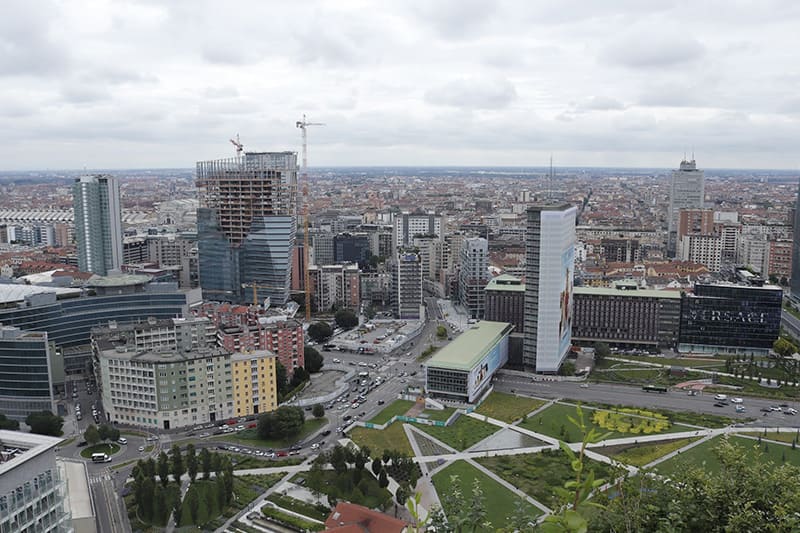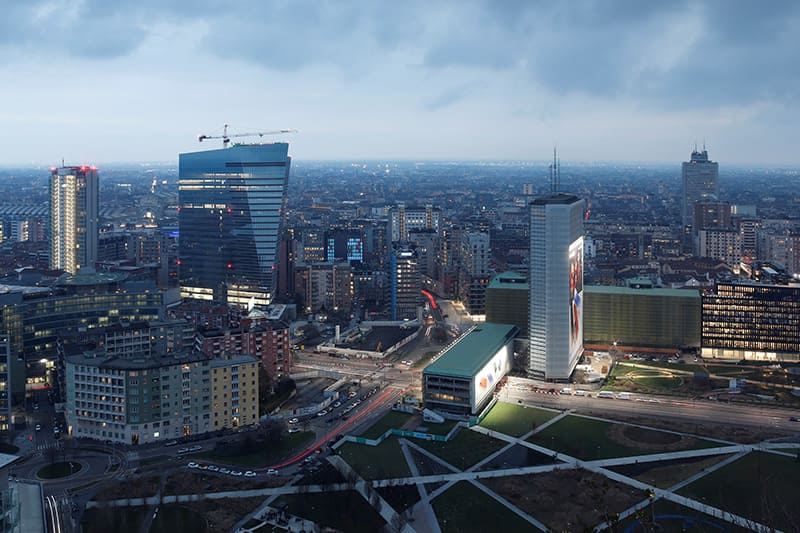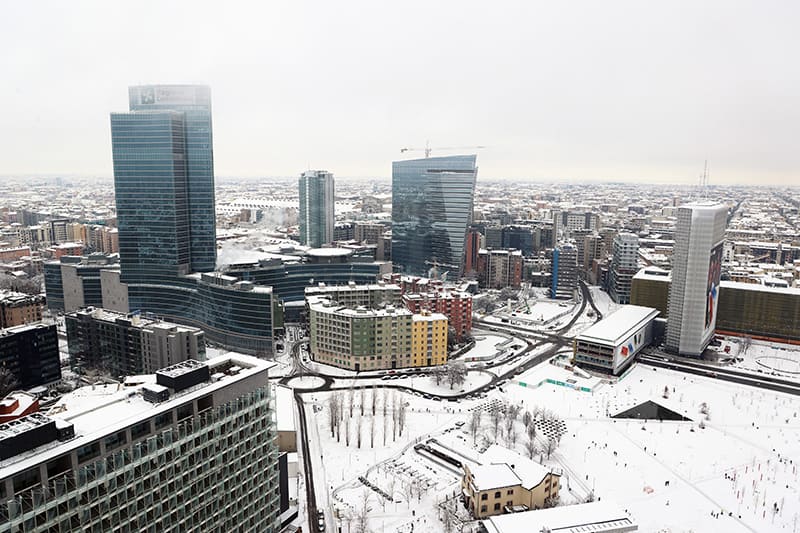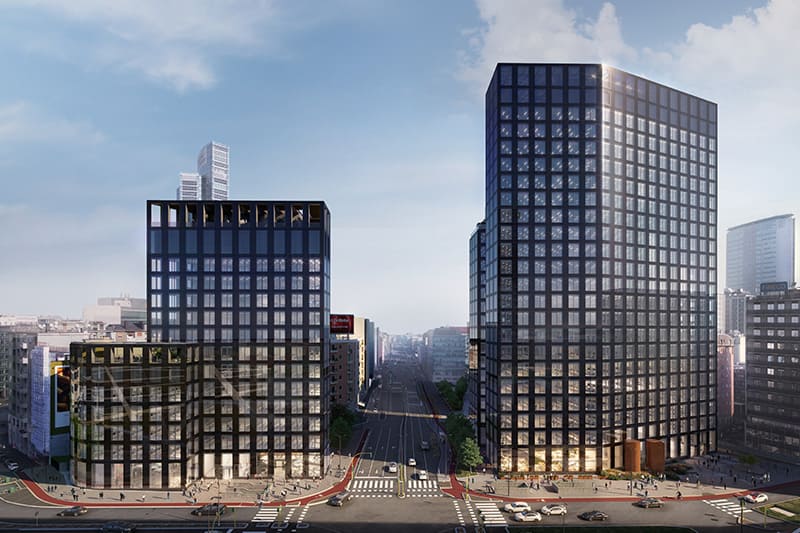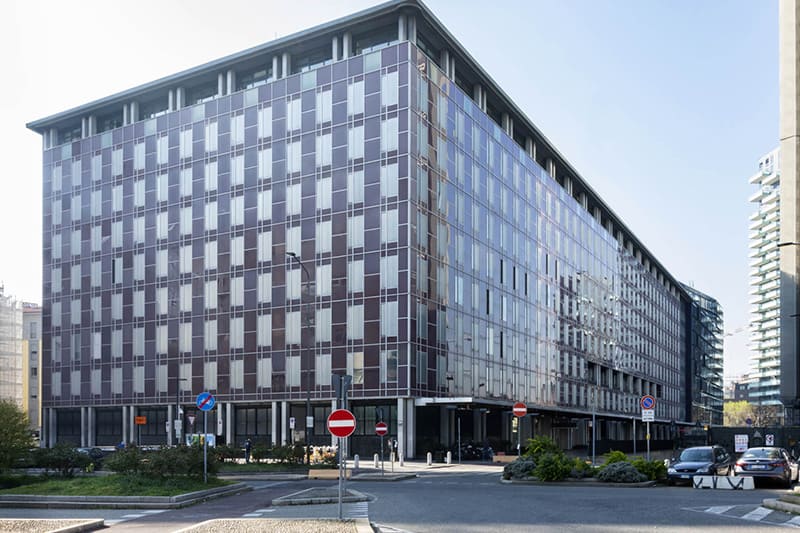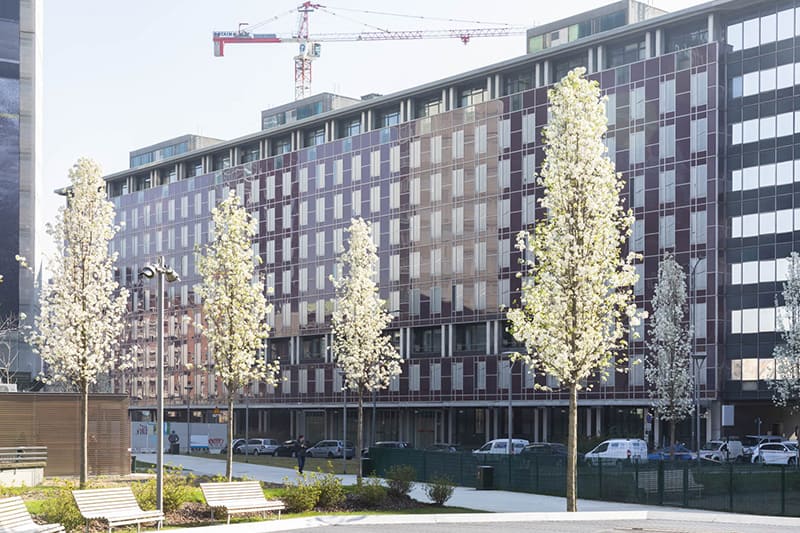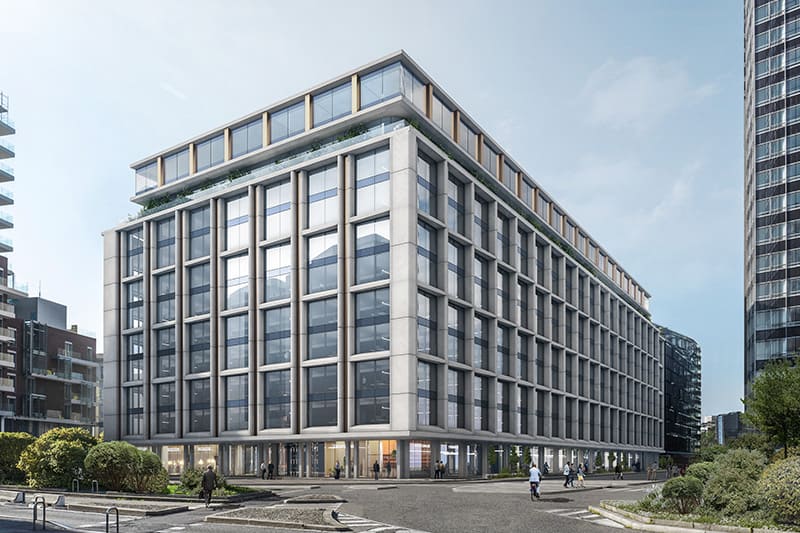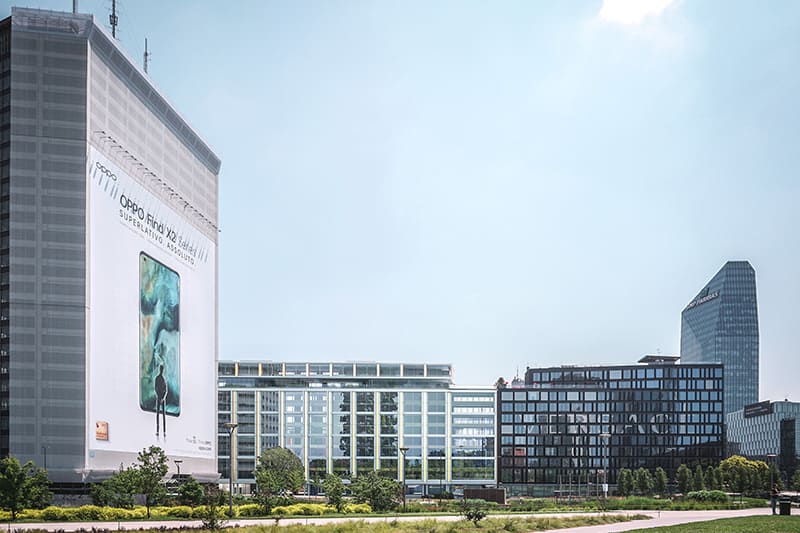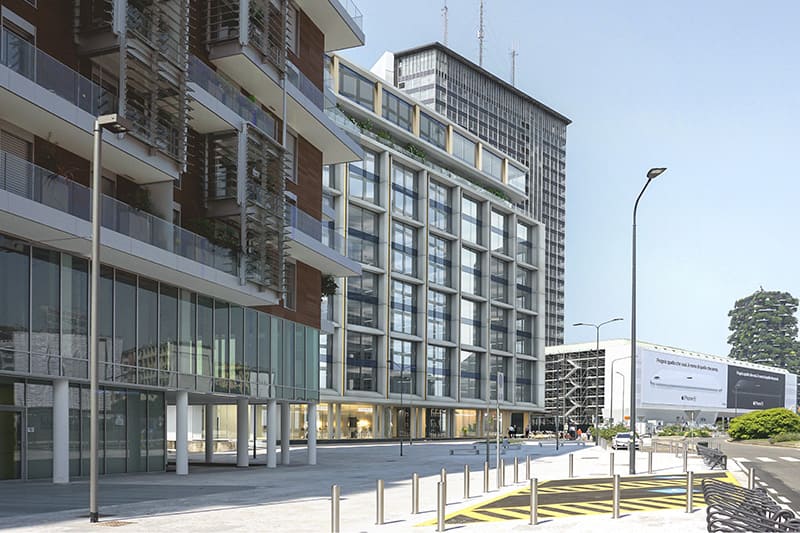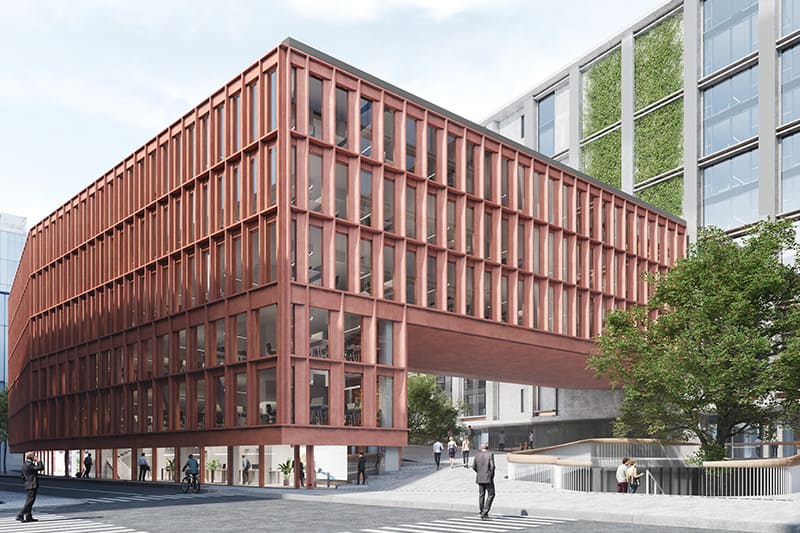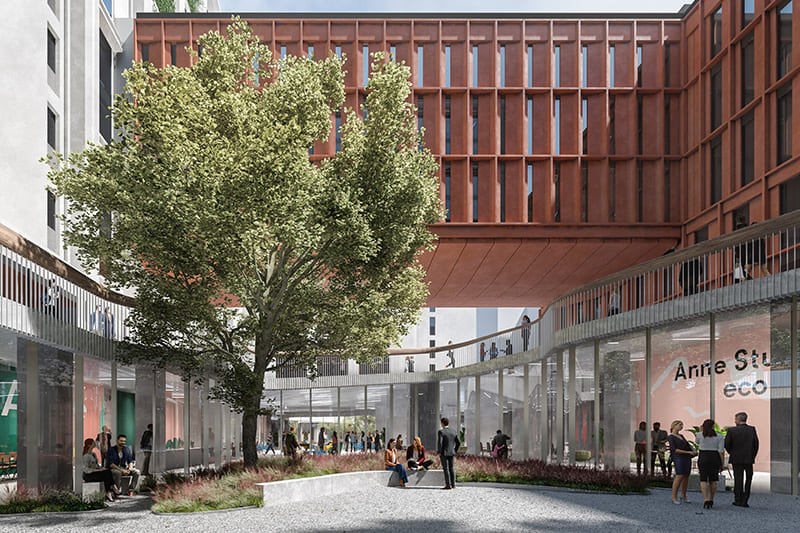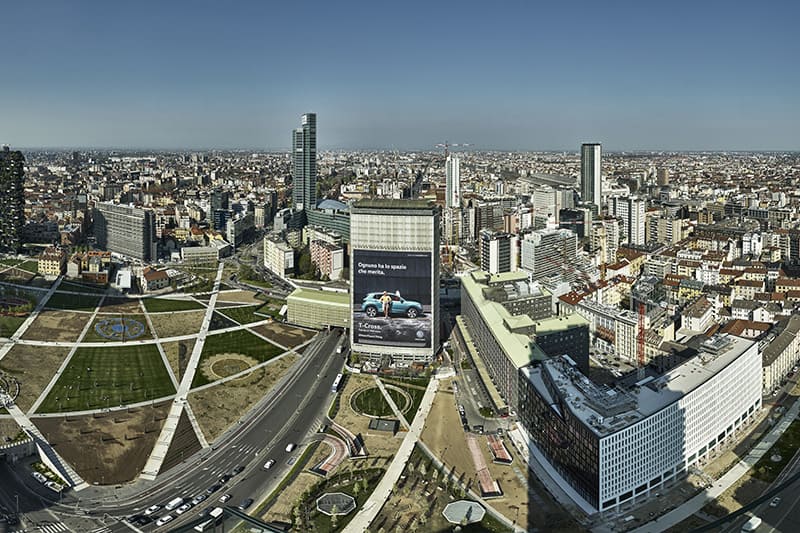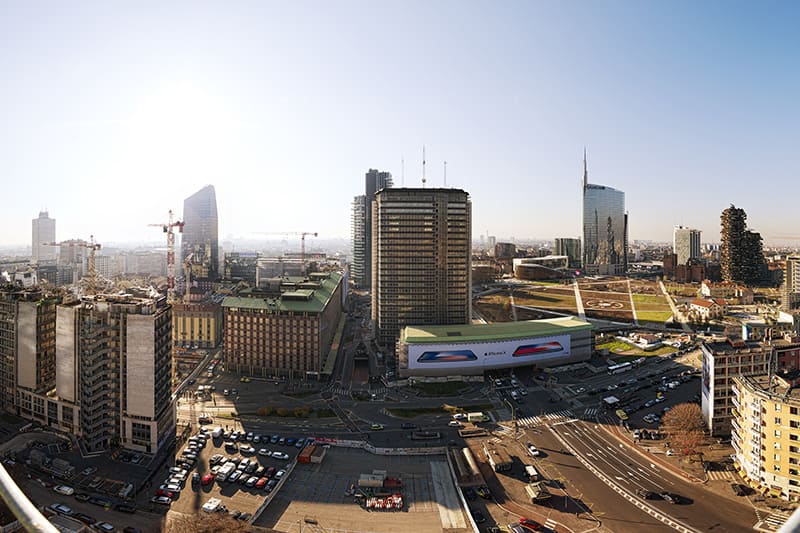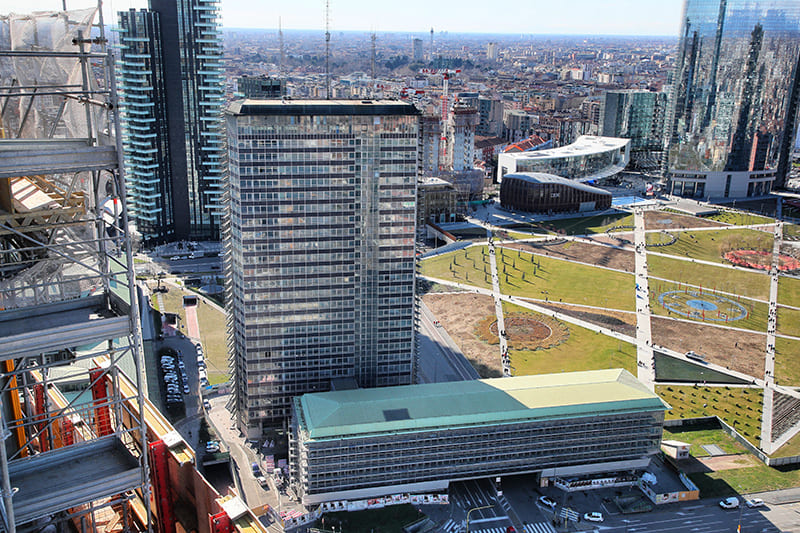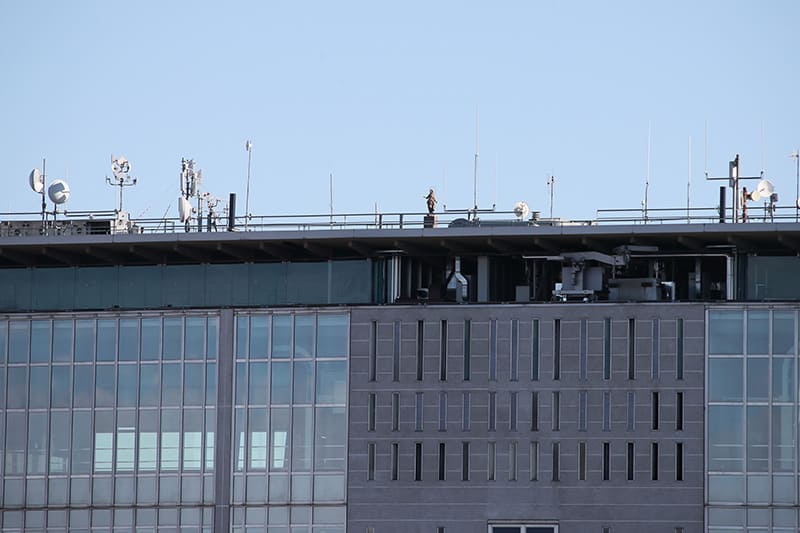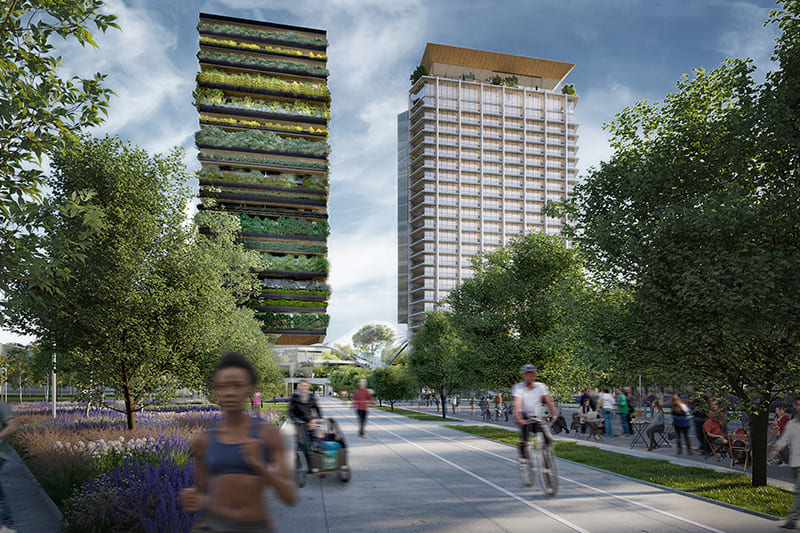The future of Portanuova
Portanuova with its skyscrapers rising among the clouds looks further, it is both a symbol and ambassador of a city ever on the move: “Milan open city,” a vibrant, lively and connected European capital. Ours is a neighbourhood, where work, leisure, and life co-exist, a place where people come to admire the present and dream of the future to come. On this page we’ll share some of the ideas in the works (literally!), so that together we can do our best to make Portanuova a place where the sky is a little bluer.
- I Portali
- Pirelli 35
- Pirelli 39
Smart and independent.
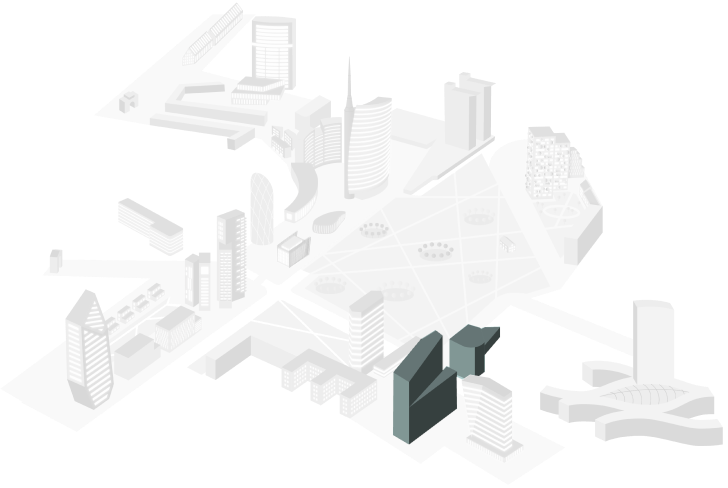
This eminent operation involves the erection of two buildings in the strategic position at the centre of the Porta Nuova Gioia business district, along with the regeneration of the surrounding area. The West Tower, placed beside the BAM - Biblioteca degli Alberi Milano, is surrounded by public spaces combined to form a new square. It will be 65 m tall, will have 35 floors, and will host 813 people. The East Tower will soar to a height of 98 m, and its 24 floors host a maximum of 3,500 people.
Thanks to the 957 PV panels of the West Tower, the 2,174 panels of the East Tower, and the use of an aquifer system for A/C and heating, 65% of the buildings’ consumption will be satisfied through renewable energy.
For safety to be sustainable too, the towers will also be smart buildings thanks to a network of electronic devices for remote monitoring and IoT (Internet of Things) technology. The towers have been designed to achieve LEED PLATINUM, WELL GOLD, NZEB, Cradle to Cradle, and WiredScore certifications, thus reiterating Milan’s and Italy’s role among environmental sustainability protagonists.
- 65% Demand satisfied by renewable energy
- 3,131 Total PV panels (957+2,174)
- WiredScore Certification

The return of the baby boomer.
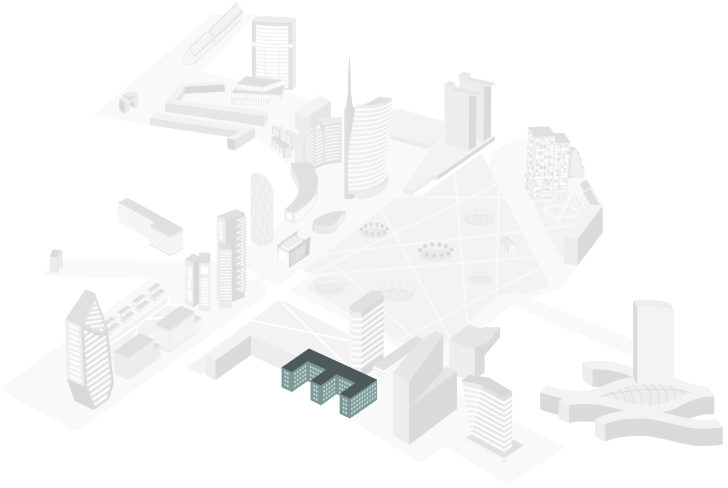
Pirelli 35 reclaims its city through a revamping and “re-functionalization” operation giving it a polished and modern twist. The new architectural design included a complete renovation of one of the symbols of the Milan business hub in the 1960s (original design by Melchiorre Bega). It spans a 40,000-m2 area, and involves two 10- and 5-floor elements with a 3,000 m2 inner courtyard. With the credentials to achieve LEED Platinum, WELL, and Cradle to Cradle certifications, Pirelli 35 becomes an endorser of the values of maximum energy efficiency, sustainability, and flexibility that the district as a whole symbolizes. In practical terms, the recovery includes 60% of the existing building as an alternative to its full demolishment minimizes environmental impact thanks to reduced energy and raw material consumption. Speaking of which, over 10% of the building’s energy demand is granted by a latest-generation PV system. Design: Snøhetta e Park Associati. It is planned to be completed in 2023.
- EU 2050 Net-zero CO2 emissions
- 120,000 m2 Public spaces
- Cradle to Cradle Certification

A great future overlooking the green.
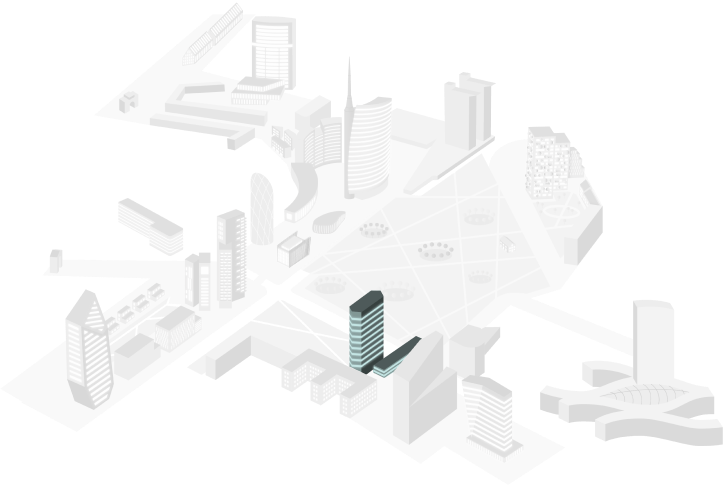
The renovation of the “Pirellino” – a historic building designed in the 1950s by a team of Italian architects (Gandolfi, Putelli, Bazzoni, Fratino) – encompasses a total of 110,00 m2, 27 thousand of which destined to be public spaces to create a link with the BAM - Biblioteca degli Alberi Milano. The construction, which has hosted the city’s public design department up to 2013, includes a 90-metre, 26-floor tower, a 3-level underground parking lot, and a bridge-shaped lower unit extending to Via Melchiorre Gioia. The new residential tower will also be the habitat for 700 m2 of plants laid out so that the colours of their flowers may vary with the seasons. An alive and kicking ecosystem that will contribute to the absorption of 14 t/year of CO2 and release of 9 t/year of oxygen (as much as a 10,000-m2 forest). 2,770 m2 of PV panels will provide for 65% of its energy demand. Finally, the 1,800 m3 of its wooden floors will save up to 3,600 t of CO2 in the construction phase. Pirelli 39 will be the first Italian project fully measurable in accordance with ESG criteria.
- 27,000 m2 Public spaces
- 26 floors / 90 m (h) The tower
- -14 t CO2 per year

